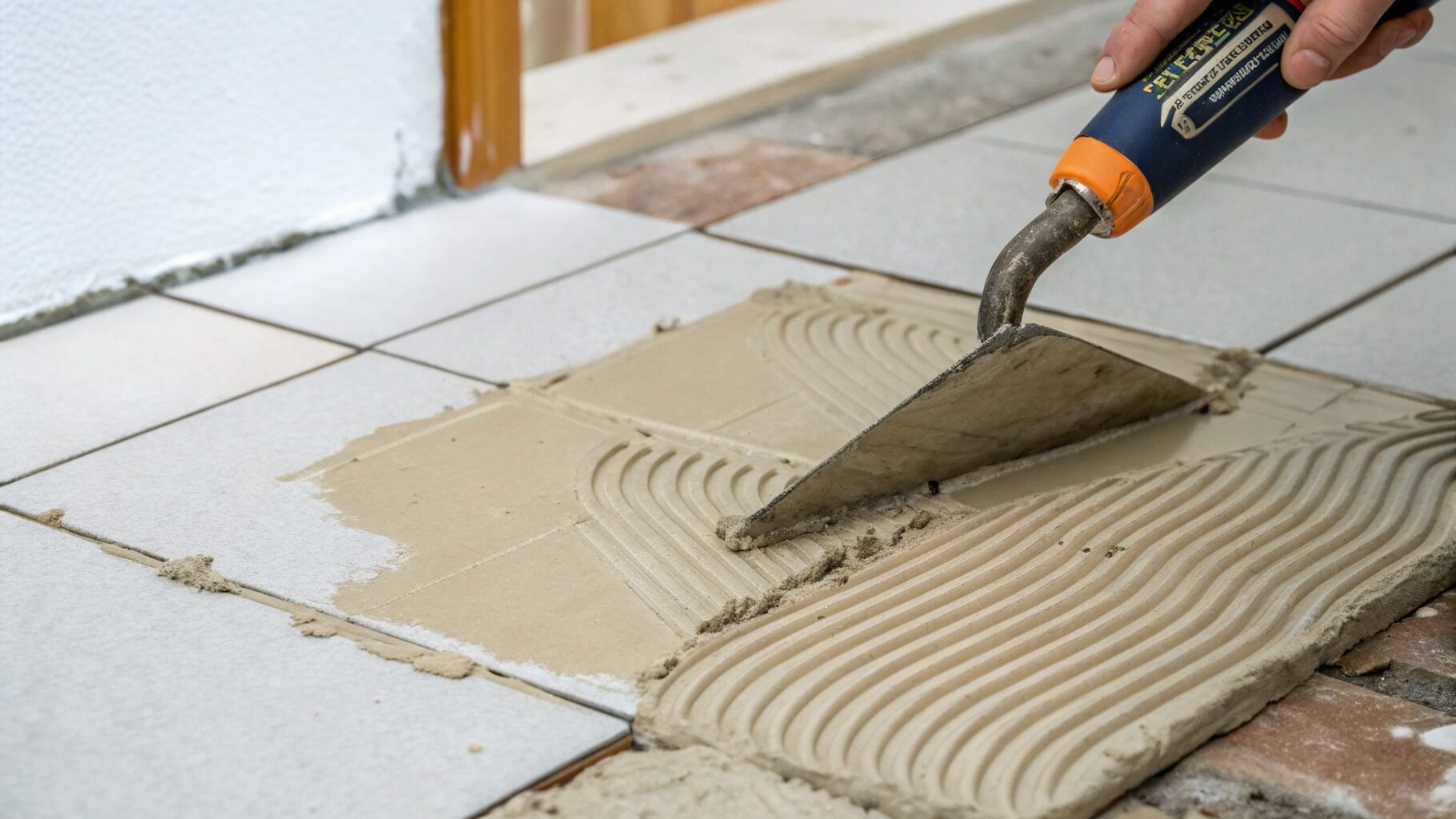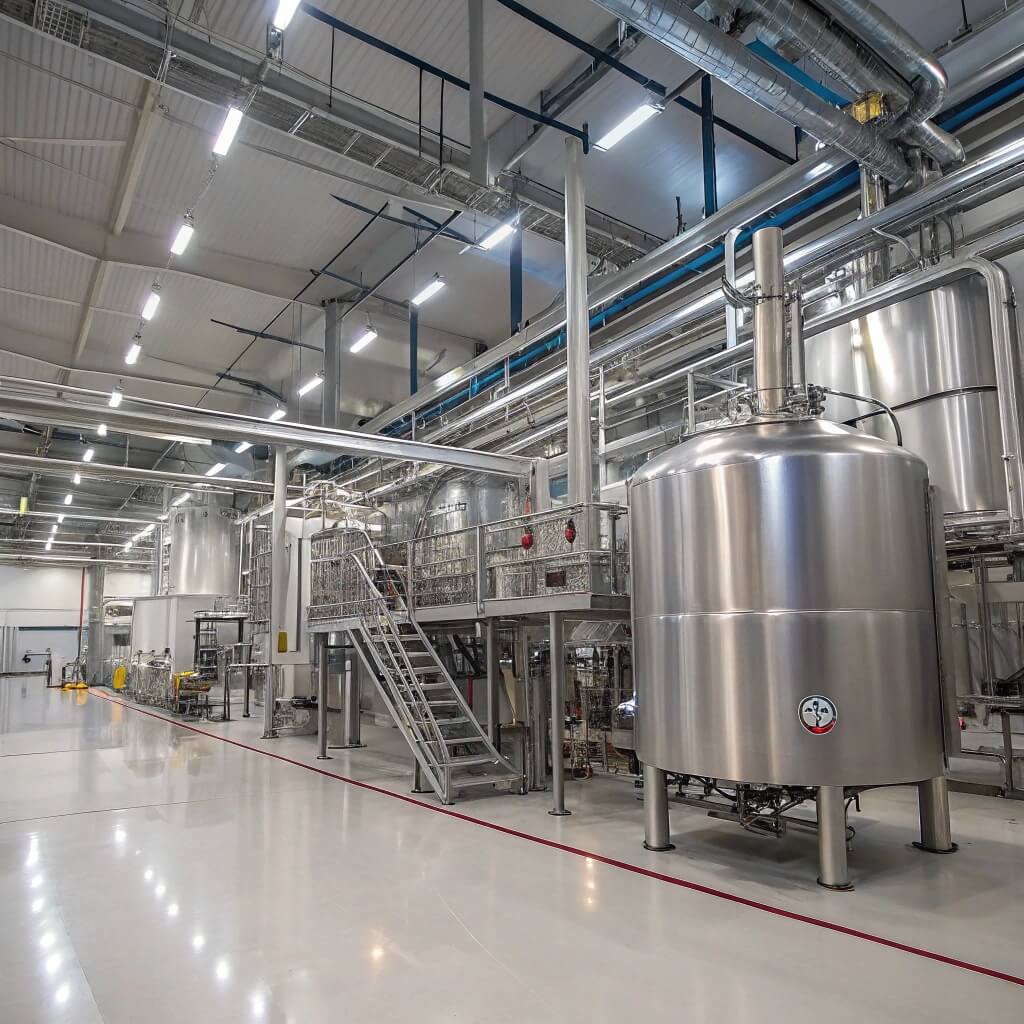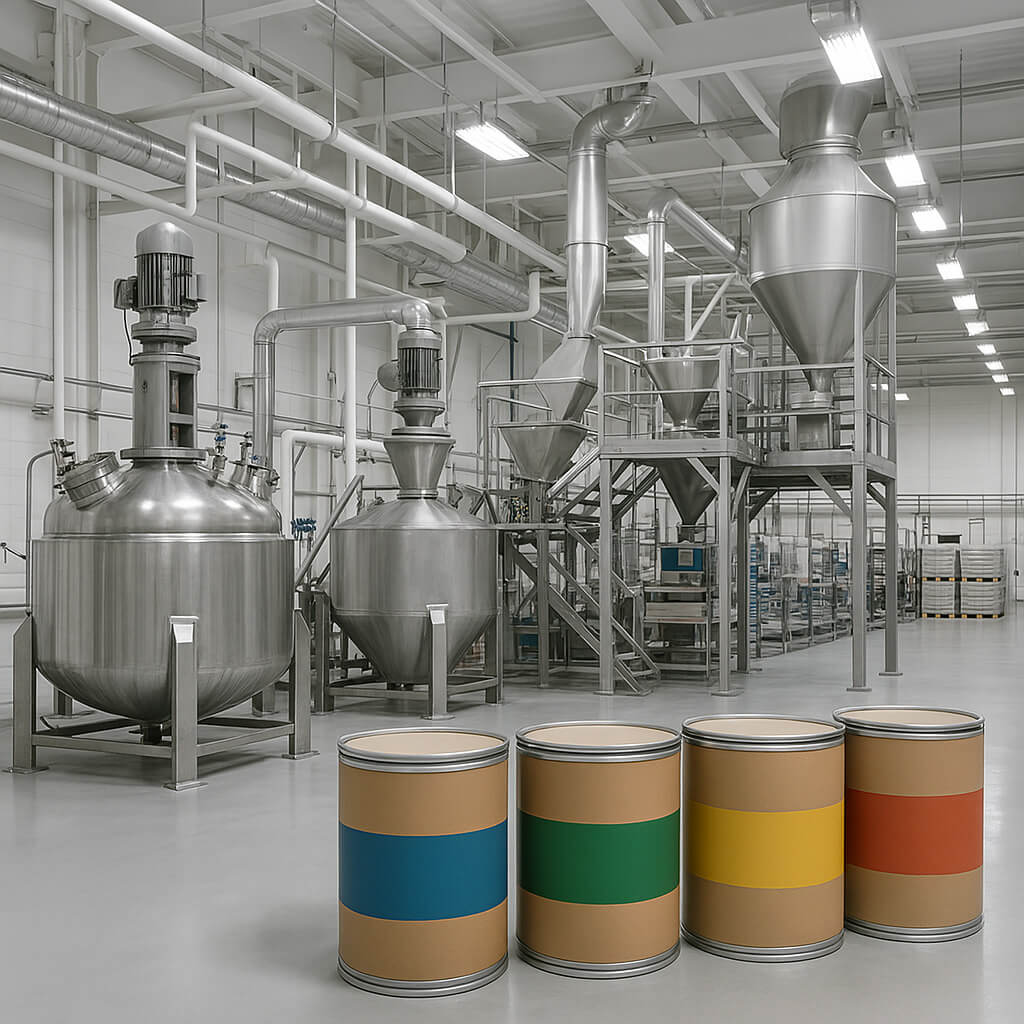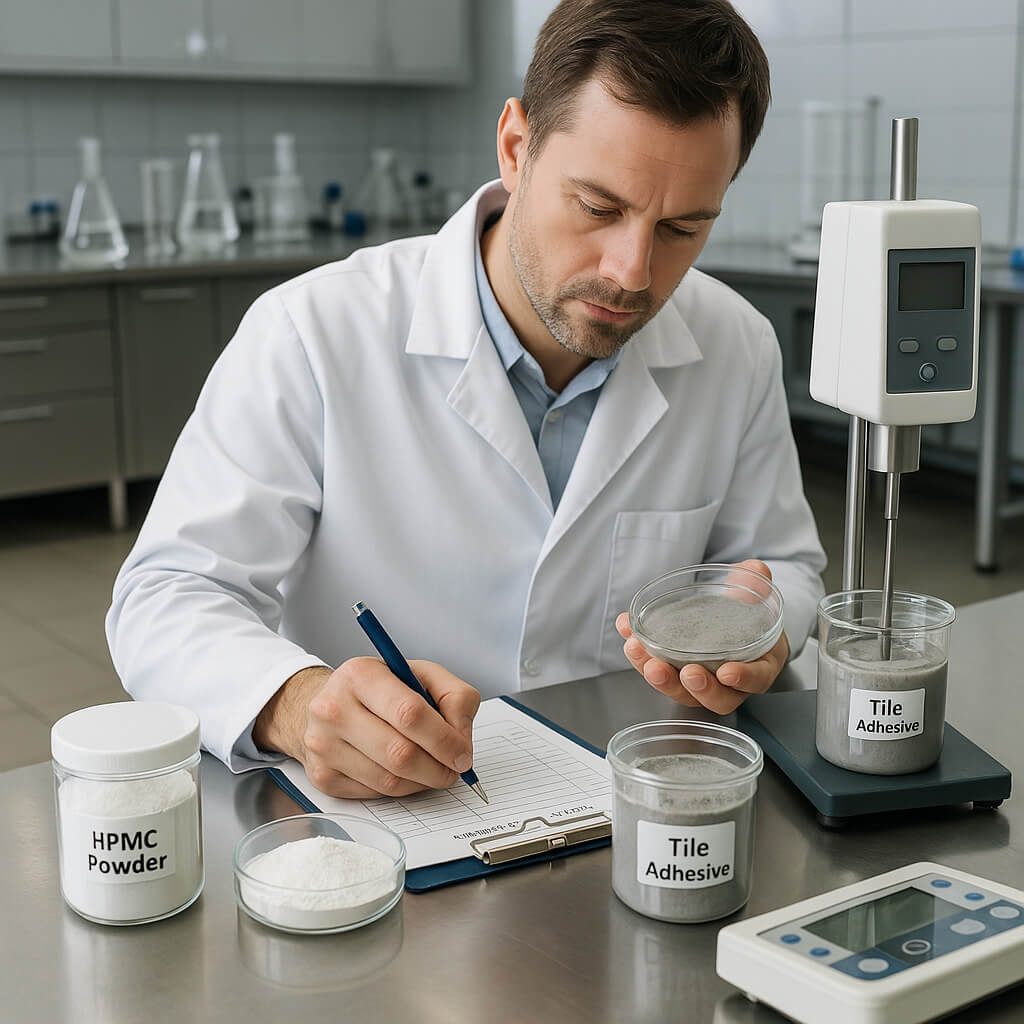Tile adhesives must perform consistently under various conditions. Poor water retention, weak adhesion, or sagging tiles can lead to project failures and costly repairs. Many contractors struggle to find a formula that ensures durability, flexibility, and ease of application.
Hydroxypropyl Methylcellulose (HPMC) is a key additive that enhances tile adhesive performance by improving water retention, adhesion, workability, and long-term durability. It regulates moisture content, extends open time, and provides essential anti-slip properties, ensuring tiles remain securely bonded under different environmental conditions.

HPMC significantly improves the bonding strength, workability, and durability of tile adhesives, making it a crucial component for high-performance formulations.
Choosing the right additives in tile adhesives can determine the success or failure of an installation. HPMC plays a fundamental role in enhancing application efficiency and ensuring long-term stability. Below, we explore how HPMC improves various aspects of tile adhesives, from water retention to adhesion and workability.
How Does HPMC Improve Tile Adhesive Performance?
Tile adhesives require precise consistency, adhesion, and durability to ensure a strong bond between tiles and substrates. Without the right additives, these adhesives may fail under stress. Contractors and manufacturers need a solution that enhances workability, longevity, and performance across different applications.
HPMC enhances tile adhesive performance by improving water retention, adhesion strength, open time, workability, and resistance to sagging. It stabilizes the adhesive mixture, ensuring smooth application, better bonding, and long-term durability.
Key Benefits of HPMC in Tile Adhesives
HPMC plays a crucial role in optimizing tile adhesives for professional use. Below are the core performance enhancements it provides:
| Facteur de performance | Impact du HPMC |
|---|---|
| Rétention d'eau | Prevents premature drying, ensuring proper hydration of cementitious materials. |
| Force d'adhérence | Improves bonding between tiles and substrates, reducing the risk of detachment. |
| Open Time Extension | Allows for better tile positioning before the adhesive sets. |
| Maniabilité | Provides a smooth, creamy texture for easier application and reduced trowel drag. |
| Sag Resistance | Prevents tiles from slipping on vertical surfaces, ensuring precise alignment. |
How HPMC Enhances Tile Adhesive Formulations
- Improved Water Retention – Ensures that cement and other components hydrate properly, preventing rapid moisture loss.
- Better Bonding Strength – Strengthens the interaction between the adhesive and the substrate, reducing the risk of tile detachment.
- Heures d'ouverture prolongées – Allows professionals to position tiles more accurately before the adhesive sets.
- Enhanced Workability – Provides a smoother consistency, reducing effort during application and improving coverage.
- Sag Resistance – Ensures tiles remain in place, even on vertical surfaces, by preventing downward sliding.
Incorporating HPMC into tile adhesives results in improved application efficiency, superior bonding, and enhanced durability. The next section explores why water retention is a critical factor in tile adhesive formulations and how HPMC optimizes this property.
Why Is Water Retention Crucial in Tile Adhesives?
Premature drying in tile adhesives can weaken bonding strength, causing tiles to detach over time. Without proper water retention, cement hydration is incomplete, leading to compromised adhesion and reduced durability. Professionals need a formulation that maintains optimal moisture levels for effective tile installation.
HPMC ensures proper water retention in tile adhesives by slowing down moisture evaporation, allowing cement to hydrate fully and develop maximum bonding strength. This prevents issues like poor adhesion, cracks, and inconsistent curing, making adhesives more reliable.
The Role of Water Retention in Tile Adhesive Performance
Water plays a crucial role in cement-based adhesives by activating the hydration process, which is essential for forming strong chemical bonds. If moisture evaporates too quickly, cement cannot fully react, leading to weak adhesion and brittle structures. HPMC acts as a water-retaining agent, regulating moisture loss and ensuring consistent performance.
| Key Effect | Impact on Tile Adhesive |
|---|---|
| Cement Hydration | Ensures complete chemical reactions for stronger bonds. |
| Heures d'ouverture prolongées | Gives installers more flexibility for adjustments. |
| Prevention of Cracks | Reduces shrinkage and surface defects during curing. |
| Adhérence améliorée | Ensures a more secure bond between tiles and substrate. |
How HPMC Optimizes Water Retention
- Forms a Protective Barrier – HPMC creates a thin film over the adhesive surface, slowing down moisture evaporation and preserving hydration.
- Balances Moisture Distribution – Maintains uniform water content, preventing uneven drying and ensuring consistent curing.
- Prolonge le temps d'ouverture – Allows more time for precise tile placement before the adhesive starts setting.
- Reduces Shrinkage and Cracks – Minimizes stress during drying, preventing structural weaknesses in the adhesive layer.
- Enhances Cement Reactivity – Ensures cement particles achieve full hydration, maximizing bonding performance.
The Consequences of Poor Water Retention
Without proper water retention, tile adhesives dry too quickly, resulting in weak bonding and structural issues. This can lead to:
- Tile Detachment – Poorly hydrated cement weakens adhesion, causing tiles to loosen over time.
- Surface Cracks – Rapid drying causes shrinkage cracks that compromise durability.
- Uneven Curing – Inconsistent moisture distribution results in adhesive layers with varying strengths.
- Difficult Application – Low water content makes adhesives thick and hard to spread.
By incorporating HPMC into tile adhesive formulations, manufacturers can ensure superior moisture control, stronger adhesion, and longer-lasting tile installations. The next section will explore how HPMC further enhances adhesion and bonding strength.
Comment le HPMC améliore-t-il l’adhérence et la force de liaison ?
Weak adhesion in tile adhesives leads to detachment, costly repairs, and reduced structural integrity. If bonding strength[^1] is insufficient, tiles may fail to adhere properly, especially in high-moisture or high-traffic environments. To ensure long-term durability, tile adhesives must form a strong and stable bond with both tiles and substrates.
[^1]: Understanding bonding strength is crucial for selecting the right adhesive; this link provides insights into its impact on tile adhesion.
HPMC enhances adhesion and bonding strength by improving cement hydration, increasing cohesion, and optimizing the adhesive’s consistency. This results in stronger chemical bonds, better surface wetting, and a more durable installation.
The Science Behind Adhesion in Tile Adhesives
Adhesion in cement-based tile adhesives depends on both mechanical interlocking and chemical bonding. When the adhesive cures, cement particles create a crystalline structure that physically locks the tile and substrate together. HPMC improves this process by regulating water retention and optimizing the rheology of the adhesive.
| Adhesion Factor | Impact du HPMC |
|---|---|
| Cement Hydration | Ensures full hydration, strengthening chemical bonds. |
| Surface Wetting | Improves adhesive spreadability and tile coverage. |
| Cohesive Strength | Reduces internal cracking, preventing adhesive failure. |
| Flexibilité | Increases resistance to stress, reducing the risk of detachment. |
How HPMC Enhances Bonding Performance
- Optimized Water Retention – Maintains adequate moisture levels for full cement hydration, resulting in a denser and stronger adhesive structure.
- Improved Workability – Provides a smooth and creamy consistency, ensuring uniform application and better substrate contact.
- Increased Open Time – Prevents premature drying, allowing time for proper tile positioning and ensuring full adhesive contact.
- Enhanced Cohesion – Reduces micro-cracks within the adhesive layer, improving its mechanical stability.
- Stronger Chemical Bonding – Facilitates better interaction between cement particles and the substrate, increasing overall adhesion strength.
The Risks of Poor Adhesion in Tile Installations
Failing to achieve strong adhesion can lead to:
- Tile Slippage and Detachment – Weak bonding results in tiles shifting or falling off over time.
- Structural Weakness – Poor adhesion reduces the load-bearing capacity of tiled surfaces.
- Water Penetration – Weak bonds create gaps where moisture can seep in, leading to degradation.
- Higher Maintenance Costs – Detachment and damage require frequent repairs, increasing long-term expenses.
By integrating HPMC into tile adhesive formulations, manufacturers can significantly enhance bonding performance, ensuring tiles remain securely in place under various conditions. The next section explores how HPMC impacts open time and overall workability.
What Is the Impact of HPMC on Open Time and Workability?
Tile adhesive that sets too quickly can make installation challenging, reducing efficiency and leading to poor tile adhesion. Insufficient open time limits adjustments, causing misalignment and weak bonds. Installers need a formulation that provides enough working time while maintaining strong adhesion.
HPMC extends open time and improves workability by controlling moisture retention, optimizing viscosity, and preventing premature drying. This allows for better tile positioning, easier spreading, and reduced material waste.
How HPMC Extends Open Time
Open time refers to the period during which a tile can be placed onto the adhesive without compromising adhesion strength. If this window is too short, installers must work faster, increasing errors and material wastage. HPMC regulates this by slowing moisture loss, keeping the adhesive workable for longer.
| Facteur | Effect of HPMC |
|---|---|
| Rétention d'eau | Prevents early drying, keeping the adhesive workable. |
| Evaporation Control | Maintains moisture balance, extending the time for adjustments. |
| Stabilité de la viscosité | Ensures consistent texture, preventing excessive thickening over time. |
How HPMC Enhances Workability
- Provides a Smooth and Creamy Consistency – Ensures easy application with minimal effort, reducing installer fatigue.
- Reduces Trowel Drag – Allows the adhesive to spread evenly without excessive resistance.
- Prevents Adhesive Sagging – Ensures tiles stay in place on vertical surfaces during application.
- Improves Tile Positioning Flexibility – Gives installers more time to adjust tile placement before the adhesive sets.
- Enhances Coverage Efficiency – Ensures even distribution, reducing material waste and improving adhesion strength.
The Consequences of Poor Open Time and Workability
If a tile adhesive dries too quickly or becomes difficult to spread, it can lead to:
- Uneven Adhesive Application – Thickened adhesive leads to inconsistent bonding and weak spots.
- Tile Misalignment – Reduced open time makes adjustments difficult, resulting in improper tile placement.
- Higher Material Waste – Faster setting times increase the amount of discarded adhesive.
- Reduced Adhesion Strength – Rapid moisture loss weakens cement bonding, increasing the risk of detachment.
With HPMC, manufacturers can optimize open time and workability, making tile adhesives easier to apply and ensuring high-performance bonding. The next section explores how HPMC contributes to anti-slip and sag resistance in tile adhesives.
How Does HPMC Contribute to Anti-Slip and Sag Resistance?
Tiles slipping during installation or sagging after placement can cause misalignment, uneven surfaces, and costly rework. On vertical applications, adhesives without proper sag resistance can allow tiles to shift before curing, leading to structural and aesthetic issues. Installers require a formulation that keeps tiles in place until the adhesive sets.
HPMC enhances anti-slip and sag resistance by improving viscosity, increasing cohesion, and stabilizing the adhesive structure. This ensures tiles remain in position on walls and other vertical surfaces without requiring mechanical support.
The Role of HPMC in Anti-Slip Performance
Anti-slip properties prevent tiles from moving after being placed onto the adhesive. Without adequate control, gravity can cause tiles to slide out of alignment, particularly in high-moisture environments or large-format tile applications.
| Facteur | Impact du HPMC |
|---|---|
| Contrôle de la viscosité | Maintains optimal adhesive thickness, reducing flow and movement. |
| Improved Cohesion | Strengthens internal bonding, preventing tile slippage. |
| Surface Interaction | Increases contact between adhesive and tile, enhancing grip. |
How HPMC Enhances Sag Resistance
- Increases Internal Stability – Improves the structural integrity of the adhesive to maintain its shape during application.
- Optimizes Water Retention – Prevents excessive drying, ensuring consistent viscosity and workability.
- Reduces Flow on Vertical Surfaces – Ensures the adhesive stays in place without dripping or sagging.
- Enhances Tile Holding Power – Maintains tile alignment without additional spacers or fasteners.
- Balances Adhesive Flexibility and Strength – Prevents excessive shrinkage while maintaining structural integrity.
The Risks of Poor Anti-Slip and Sag Resistance
Failure to control slip and sag can lead to:
- Tile Misalignment – Shifting tiles create uneven grout lines and an unprofessional finish.
- Increased Installation Time – Installers must constantly reposition tiles, slowing down the process.
- Weaker Bonding Strength – Unstable adhesives may not form a secure connection with the substrate.
- Higher Risk of Tile Failure – Improper adhesion increases the likelihood of long-term detachment.
By incorporating HPMC, tile adhesives achieve superior anti-slip and sag resistance, ensuring a stable and precise installation. The next section explores how HPMC contributes to the long-term durability of tile adhesives.
Why Is HPMC Essential for Long-Term Tile Adhesive Durability?
Tile installations are expected to last for years, but poor-quality adhesives can weaken over time, leading to cracks, detachment, and structural failures. Environmental factors such as moisture, temperature changes, and physical stress can degrade adhesives if they lack sufficient durability. A reliable formulation must maintain strength and flexibility under various conditions.
HPMC enhances long-term tile adhesive durability by improving cohesion, reducing shrinkage, and increasing resistance to environmental stressors. It ensures that adhesives maintain their structural integrity, preventing premature failure.
How HPMC Enhances Tile Adhesive Durability
Durability in tile adhesives depends on multiple factors, including water retention, flexibility, and resistance to physical and chemical deterioration. HPMC stabilizes these elements to extend the lifespan of the adhesive.
| Durability Factor | Impact du HPMC |
|---|---|
| Résistance à l'humidité | Prevents water damage and hydrolysis over time. |
| Crack Prevention | Reduces shrinkage, preventing fractures in the adhesive layer. |
| Thermal Stability | Ensures flexibility under temperature variations. |
| Chemical Resistance | Protects against degradation from cleaning agents and environmental exposure. |
How HPMC Strengthens Long-Term Adhesive Performance
- Empêche le dessèchement prématuré – Maintains optimal hydration levels for long-lasting strength.
- Reduces Shrinkage and Cracking – Ensures structural stability under mechanical stress.
- Improves Flexibility – Allows the adhesive to expand and contract without losing adhesion.
- Enhances Resistance to Water Damage – Prevents moisture penetration that weakens bonding.
- Increases Load-Bearing Capacity – Strengthens adhesion under heavy foot traffic and physical impact.
Consequences of Poor Tile Adhesive Durability
If an adhesive lacks long-term durability, it may lead to:
- Tile Detachment – Weak bonding results in tile failure, requiring costly repairs.
- Cracking and Shrinkage – Improper formulation causes structural weaknesses over time.
- Water Damage – Moisture penetration degrades adhesives, leading to mold and deterioration.
- Decreased Lifespan – Adhesives that fail prematurely increase maintenance costs and reduce tile longevity.
By incorporating HPMC, manufacturers can significantly enhance the long-term durability of tile adhesives, ensuring stable and resilient installations. The next section summarizes why HPMC is a critical component in high-quality tile adhesives.
Conclusion : pourquoi le HPMC est-il indispensable pour des adhésifs pour carrelage de haute qualité ?
Choosing the right additives in tile adhesives directly impacts installation success, long-term durability, and ease of application. Without the right formulation, issues such as poor adhesion, rapid drying, and tile slippage can lead to costly repairs and project failures. Professionals need a reliable solution that enhances performance across multiple factors.
HPMC is an essential component in modern tile adhesive formulations due to its ability to improve water retention, adhesion strength, open time, workability, anti-slip properties, and long-term durability. Its multifunctional role ensures that adhesives maintain optimal performance from application to final curing.
Key Advantages of HPMC in Tile Adhesives:
- Improved Water Retention – Prevents premature drying and ensures complete cement hydration.
- Enhanced Adhesion Strength – Strengthens bonding between tiles and substrates for lasting durability.
- Heures d'ouverture prolongées – Provides flexibility during installation, allowing precise tile placement.
- Superior Workability – Ensures a smooth, easy-to-apply consistency, reducing installation effort.
- Anti-Slip and Sag Resistance – Keeps tiles in position, especially on vertical surfaces.
- Long-Term Durability – Protects against moisture damage, shrinkage, and environmental stress.
Manufacturers integrating HPMC into tile adhesives benefit from improved product reliability, reduced material waste, and higher customer satisfaction. Whether in residential, commercial, or industrial tiling applications, HPMC contributes to creating high-quality adhesives that meet professional standards.
For businesses looking to enhance their tile adhesive formulations, partnering with a supplier that provides consistent, high-quality HPMC is essential. Contact us today to discuss how our HPMC solutions can optimize your adhesive formulations for superior performance.
FAQ
Quelle est l’utilisation du HPMC dans les colles à carrelage ?
HPMC is used in tile adhesive to enhance water retention, improve workability, and increase bonding strength. It prevents premature drying, allowing cement to fully hydrate, which leads to better adhesion and long-term durability. Additionally, it provides anti-slip properties, ensuring tiles stay in place during installation.
What is the best tile adhesive?
The best tile adhesive depends on the application. Cement-based adhesives with HPMC are widely preferred for their strong bonding, extended open time, and enhanced workability. For high-moisture environments, polymer-modified adhesives offer additional flexibility and water resistance, making them ideal for wet areas.
Quelle est la fonction du revêtement HPMC ?
HPMC coatings are used to control moisture retention, improve film formation, and enhance surface adhesion in various applications. In construction, it acts as a protective layer that prevents water loss in cement-based materials, improving durability. In pharmaceuticals and food, HPMC coatings provide controlled-release properties and enhance stability.
What is the use of HPMC thickener?
HPMC functions as a thickener by improving the viscosity and stability of various formulations. In tile adhesives, it ensures a smooth, uniform consistency for easy application while preventing sagging. In paints, cosmetics, and food products, it enhances texture, prevents phase separation, and improves overall performance.




